Splash Screen
Chapter Introduction
Section 1: Development of
African Civilizations
Section 2: Kingdoms and States
of Africa
Section 3: African Society and Culture
Visual Summary
Chapter Menu
Mali’s Bandiagara escarpment is a sandstone cliff that rises about 1640 feet (500 m) above sand flats. When the Tellem built houses in the cliffs, they probably used vines to reach them. Over the years the climate has changed, and drought has reduced the vegetation. Today the Dogon people farm and live above or below the cliffs. In this chapter you will learn about Africa’s civilizations.
• Why might people choose not to live in
existing houses?
• What types of natural disasters destroy
housing in the United States?
Chapter Intro
How does the environment impact where we live?
Chapter Intro
Chapter Intro
Development of African Civilizations
What geographic factors do you think affected the development of African civilizations?
Chapter Intro 1
Kingdoms and States of Africa
What do you think were key factors in the strength of early African kingdoms?
Chapter Intro 2
African Society and Culture
What other cultures do you think influenced African culture?
Chapter Intro 3
Chapter Preview-End
The BIG Idea
Physical Geography The widely varied geography of Africa influenced its culture and trade.
Section 1-Main Idea
Content Vocabulary
• plateau
• savanna
Academic Vocabulary
•
• so-called
resources
Section 1-Key Terms
People and Places
• Sahara
• Nubia
• Great Rift Valley
• Kushites
• Congo River
• Ethiopia
• Kalahari Desert
• King ‘Ezānā
Section 1-Key Terms
The landforms and climate zones of a region are the most important influences on how people live.
A. Agree
B. Disagree
A. A B. B
0%
0%
Section 1-Polling Question
The Impact of Geography
Africa includes a wide variety of landforms and a number of different climate zones that have influenced its history and culture.
Section 1
The Impact of Geography (cont.)
• Landforms of Africa:
– In the north, mountains run along the coast of the Mediterranean Sea. The Nile River empties into the Mediterranean, and the Sahara is the largest desert in the world.
Section 1
– The so-called hump of Africa extends to the Atlantic Ocean in the west. Here the Sahara gradually gives way to grasslands, while the coastal regions are mostly tropical jungles.
The Impact of Geography (cont.)
– Eastern Africa has a unique terrain of
mountains, upland plateaus, and lakes. The Great Rift Valley contains mountains overlooking deep canyons. Wildlife is abundant in this region.
– In the south, the mighty Congo River
Section 1
waters the Congo Basin, an area of lush vegetation. These tropical jungles gradually fade into the plateaus and deserts, such as the Kalahari, that dominate the south.
The Impact of Geography (cont.)
• Africa has four distinct climate zones:
– Mild climate of the north: 10%
– Sahara and Kalahari Deserts: 40%
– Rain forest: 10%
– Savannas: 40%
Climate Zones and Geography of Africa
Section 1
In which region of Africa would you find lakes such as Victoria, Albert, Tanganyika, and Malawi?
A. North
B. East
C. West
0%
0%
0%
0%
D. South
Section 1
A. A B. B C. C D. D
Emerging Civilizations and Religions
Kush and Axum arose as strong early civilizations. Later, Islam would influence Africa.
Section 1
Emerging Civilizations and Religions (cont.)
• The Agricultural Revolution gave rise to the African civilizations of Egypt, Kush, and Axum.
• By 2000 B.C., Egyptian traders were traveling
to Nubia to acquire ivory, ebony, and leopard skins.
• Around 1000 B.C., Nubia became the state of
Kush.
The Kingdoms of Kush and Axum
Section 1
Emerging Civilizations and Religions (cont.)
• The Kushite capital of Meroë was a major trading center. It was located where a land route across the desert met the Nile River.
• Kush had an abundance of resources, such
as iron ore.
• Kush was an urban society and eventually
Section 1
declined because of the rise of Axum.
Emerging Civilizations and Religions (cont.)
• Axum, located in what is now Ethiopia, conquered Kush in the fourth century A.D.
• King ‘Ezānā of Axum converted to
Christianity, which became the official state religion.
Section 1
• Islam, which began on the Arabian Peninsula, soon spread to northern and eastern Africa in the seventh and eighth centuries A.D.
What enabled the kingdoms of Kush and Axum to flourish?
A. Farming
B. Fishing
C. Trade
D. Military power
0%
0%
Section 1
A. A B. B C. C 0% 0% D. D
Section 1-End
The BIG Idea
Order and Security The expansion of trade enabled the kingdoms and states of Africa to protect their people and to prosper.
Section 2-Main Idea
Content Vocabulary
• subsistence
• stateless society
farming
• Swahili
Academic Vocabulary
•
factor
• security
• administrative
Section 2-Key Terms
People and Places
• Ghana
• Muhammad Ture
• Berbers
• Bantu
• Sundiata Keita
• Mogadishu
• Mali
• Mombasa
• Timbuktu
• Kilwa
•
• Mansa Mūsā
Ibn Battuta
• Sunni Ali
• Zimbabwe
Section 2-Key Terms
Do you think spices would have been as valuable as gold to ancient civilizations?
A. Yes
B. No
A. A B. B
0%
0%
Section 2-Polling Question
The Kingdom of Ghana
Trade in gold helped create a strong economy in Ghana, bringing wealth to its merchants and its kings.
Section 2
The Kingdom of Ghana (cont.)
• Ghana became the first great trading state in
West Africa around A.D. 500.
• Ghana contained an abundant supply of gold
and iron ore.
• The Berbers brought goods such as salt,
textiles, and metal goods from the Mediterranean Sea region in exchange for Ghanaian gold, iron, ivory, and slaves.
Trade in West Africa, 800–1500
Section 2
The Kingdom of Ghana (cont.)
• Camel caravans were crucial in the trade
across the Sahara.
• Ghanaian kings grew wealthy from taxing the
trade between the regions. Islamic merchants also became wealthy during this exchange of goods.
Trade in West Africa, 800–1500
Section 2
Who carried goods across the desert?
A. Muslims
B. Army
C. Slaves
D. Berbers
0%
0%
Section 2
A. A B. B C. C 0% 0% D. D
The Kingdom of Mali
Powerful leadership helped Mali thrive.
Section 2
The Kingdom of Mali (cont.)
• After the fall of Ghana, Sundiata Keita established the Kingdom of Mali in the middle of the thirteenth century.
• Sundiata united the people of Mali and
defeated the Ghanaians in 1240.
Section 2
• The empire of Mali extended from the Atlantic Ocean to Timbuktu. Local administrative leaders collected taxes for the king.
The Kingdom of Mali (cont.)
• Mansa Mūsā came to power in 1312. He
doubled the size of the kingdom and created a strong, centralized government.
Section 2
• Mansa Mūsā made a pilgrimage to Makkah in which he demonstrated his wealth and power. He was joined by thousands of soldiers and servants, and gave gold to the peoples along the way.
The Kingdom of Mali (cont.)
• Mansa Mūsā’s pilgrimage inspired him to make Timbuktu an intellectual center of Islamic learning and culture.
Section 2
• The Mali kingdom began to decline with civil war and the rise of the Songhai Kingdom.
Which of the following was a result of Mansa Mūsā’s pilgrimage?
A. He conquered Makkah.
B. He decided to convert
to Islam.
C. He began to trade with
the Arabs.
0%
0%
0%
0%
D. He made Timbuktu a
Section 2
A. A B. B C. C D. D center of Islamic education.
The Kingdom of Songhai
Situated along the Niger River, the Songhai became powerful traders.
Section 2
The Kingdom of Songhai (cont.)
• In 1464, Sunni Ali united the rural and urban people along the Niger River. He established the Kingdom of Songhai.
• The Songhai grew wealthy from controlling trade on the river. They captured Timbuktu and Djenné, gaining more wealth from the salt and gold trade.
Section 2
• The height of the Songhai Kingdom came under Muhammad Ture, a military leader and devout Muslim.
The Kingdom of Songhai (cont.)
• Muhammad Ture continued the expansionist policies of his predecessor. His large military was able to maintain peace and security throughout the empire.
Section 2
• The Songhai Empire ended when the sultan of Morocco’s forces occupied the country near the end of the sixteenth century.
How did military expansion help the Songhai people?
A. It gave them control of the
salt and gold trade.
B. It gave them more land
for farming.
0%
0%
0%
0%
C. It gave them more land for recruiting soldiers.
Section 2
A. A B. B C. C D. D D. It gave them more technology.
Societies in East Africa
The migration of the Bantu and Indian Ocean trade changed East Africa.
Section 2
Societies in East Africa (cont.)
• The Bantu communities were based on subsistence farming. They also spread across Africa their knowledge of iron- smelting and high-yield crops such as yams and bananas.
• The Bantu settled in trading communities
along the coast of the Indian Ocean.
The Bantu Migration
Section 2
Societies in East Africa (cont.)
• Great Zimbabwe was a prosperous city on
the coast.
• Muslims began to settle with the Bantu
people on the coast. They formed commercial port cities such as Mogadishu, Mombasa, and Kilwa.
Indian Ocean Trade
Section 2
Societies in East Africa (cont.)
• Ibn Battuta, an Arab traveler who went
through most of the Muslim countries and China, remarked that Kilwa was one of the most beautiful cities in the world.
Section 2
• Eventually, the cultures of the Bantu and Muslim traders mixed and formed a new culture known as Swahili.
What is subsistence farming?
A. Growing crops for personal use
B. Growing crops to trade
C. Growing crops for
livestock
D. Growing crops for a king
0%
0%
0%
0%
or government
Section 2
A. A B. B C. C D. D
Societies in South Africa
In southern Africa, independent villages organized into states, the most powerful of which was Zimbabwe.
Section 2
Societies in South Africa (cont.)
• In southern Africa, most of the people lived
in stateless societies, which were groups of independent villages organized by clans and led by a local ruler.
• Zimbabwe was the wealthiest and most
Section 2
powerful state in the region, trading gold to the Swahili communities on the east coast of Africa.
Societies in South Africa (cont.)
• The capital of the kingdom was Great
Section 2
Zimbabwe. The city was surrounded by The Great Enclosure that illustrated the kingdom’s power and influence. Eventually, it was abandoned.
What was unique about Great Zimbabwe?
A. It was built on an island.
B. It was built on a volcano.
C. It was surrounded with a
massive stone wall.
D. Public buildings were
0%
0%
lined with gold.
Section 2
A. A B. B C. C 0% 0% D. D
Section 2-End
The BIG Idea
Ideas, Beliefs, and Values African society was centered on village and family life, with distinct religious beliefs and a rich culture.
Section 3-Main Idea
Content Vocabulary
•
lineage group
• diviner
• matrilineal
• griot
• patrilineal
Academic Vocabulary
•
founding
• culture
Section 3-Key Terms
People and Places
• Yoruba
• Nigeria
• Ashanti
•
lfe
• Benin
Section 3-Key Terms
There’s a traditional African saying that it takes a village to educate a child. Do you agree or disagree with this statement?
A. Agree
B. Disagree
A. A B. B
0%
0%
Section 3-Polling Question
Aspects of African Society
African society was strongly influenced by values and customs, such as the importance of the family, common ancestors, and community education.
Section 3
Aspects of African Society (cont.)
• African kings were generally closer to the
people than in other societies. The king often spoke with commoners about complaints or other issues.
Section 3
• For most Africans, life consisted of a village and their sense of identity to an extended family or clan, consisting of parents, children, grandparents, and other family dependents.
Aspects of African Society (cont.)
• Families lived in larger communities known as lineage groups. Elders maintained the power in the group.
• While women were generally subordinate to
men in Africa, many societies were matrilineal rather than patrilineal societies.
Section 3
• In typical African villages, a child’s education was a shared responsibility by parents and village elders.
Aspects of African Society (cont.)
• Africans utilized slave labor, like many other
ancient societies.
Section 3
• Slaves included people captured in war, debtors, and criminals, and became an important commodity to be traded.
In a typical African village, who was responsible for the education of children up to age six?
A. Mother
B. Father
C. Grandmother
0%
0%
D. Grandfather
Section 3
A. A B. B C. C 0% 0% D. D
Religious Beliefs
Most African societies held similar, traditional beliefs; the spread of Islam challenged these African beliefs.
Section 3
Religious Beliefs (cont.)
• Although African religious beliefs varied from place to place, most shared the idea of a single creator god.
• In Nigeria, the Yoruba people believe that their chief god sent his son down from heaven in a canoe to create the first humans. Many slaves transported to America practiced this religion.
Religion in Africa
Section 3
Religious Beliefs (cont.)
• The Ashanti people of Ghana believed in a supreme joined by a group of lesser gods. Because the lesser gods could not be trusted, humans needed to appease them to avoid their wrath.
• Africans communicated with the gods via
diviners.
Religion in Africa
Section 3
Religious Beliefs (cont.)
• There were rituals dedicated to founding
ancestors. Ancestors were seen as closer to the gods, and were needed for positive influence over everyday life.
• The influence of Islam followed the Arab traders, and Islam gained in popularity because of its acceptance by the wealthy and upper class.
Religion in Africa
Section 3
Religious Beliefs (cont.)
• Islam often ran in contrast to traditional
African religion. Over time, a unique form of Africanized Islam appeared.
Religion in Africa
Section 3
Why were ancestors worshipped in traditional African religion?
A. To give thanks for family
B. To please the ancestors,
as they could influence their
descendents
0%
0%
0%
0%
C. To pray for the future
generations of the clan
Section 3
A. A B. B C. C D. D D. The dead were thought to be gods.
African Culture
Africa’s rich culture of paintings, carvings, sculpture, music, and dance often served a religious purpose.
Section 3
African Culture (cont.)
• Early African art was influenced by religion.
• Rock paintings, wood carvings, and terra cotta figurines are all thought to have religious significance.
• At Ife, the capital of the Yoruba people,
Section 3
metalworkers fashioned handsome bronze and iron statues. These works are thought to have influenced the artists in Benin, where bronze heads of royalty and animals were produced.
African Culture (cont.)
• African dance and music often served a
religious purpose.
• Griots transmitted African history by song or
Section 3
storytelling.
Why were storytellers important to African tradition?
A. They often made kings seem more powerful in their stories.
B. They gave Africans the opportunity to socialize.
0%
0%
0%
0%
C. They gave Africans an unwritten
method of maintaining their history.
D. Storytellers often acquired great
A. A B. B C. C D. D
wealth by telling stories and fables.
Section 3
Section 3-End
EARLY AFRICAN SOCIETIES
• For centuries, until A.D. 150, Kush’s advanced civilization in the upper Nile thrived on trading ivory and ebony with Egypt, India, and Arabia.
• Evolving from an Arab
colony, Axum succeeded Kush as a major trading power in East Africa.
• Once the Muslims conquered Egypt, they began
to set up Islamic states in Northern Africa, transforming the culture.
VS 1
AFRICAN KINGDOMS
•
In the upper Niger River valley, the kings of Ghana ruled a trading empire based on gold.
• With legendary rulers Sundiata Keita
and Mansa Mūsā, the kingdom of Mali replaced Ghana’s dominance in the 1200s.
• Bantu-speaking peoples
slowly migrated east and south, spreading the use of iron tools in farming.
•
In the 1300s and 1400s, cities on the eastern coast traded with India and Arabia, while the wealthy state of Zimbabwe prospered in the south.
VS 2
AFRICAN SOCIETY AND CULTURE
•
In Africa extended families and lineage groups were the basic units for village societies.
• Communication with a creator
god through rituals and ancestors typified many African religions.
• Arab merchants brought Islam to East and Southern Africa, and it began to gain converts in the 1300s.
• Religion drove artistic expression, exemplified in West
African sculptures, while griots or storytellers preserved literature and history.
VS 3
VS-End
Figure 1
Figure 2
Figure 2a
Figure 3
Figure 4
Figure 5
Figure 6
Figure 7
Chapter Transparencies Menu
Chapter Transparency
Unit Time Line Transparency
Select a transparency to view.
Chapter Trans Menu
Cause-and-Effect Transparency
Chapter Trans
Unit Timeline Trans
CnETrans
DFS Trans 1
DFS Trans 2
DFS Trans 3
plateau
Vocab1
a relatively high, flat land area
savanna
Vocab2
broad grassland dotted with small trees and shrubs
so-called
Vocab3
commonly named; popularly termed
resources
Vocab4
available means for economic or political development
subsistence farming
Vocab5
the practice of growing just enough crops for personal use, not for sale
Swahili
Vocab6
a mixed African-Arabic culture that developed along the east coast of Africa; also, the major language used in that area, combining Bantu with Arabic words and phrases
stateless society
Vocab7
a group of independent villages
factor
Vocab8
a contributing part
administrative
Vocab9
relating to the execution of public affairs, as distinguished from policymaking
security
Vocab10
freedom from danger or invasion; safety
lineage group
Vocab11
an extended family unit that has combined into a larger community
matrilineal
Vocab12
tracing lineage through the mother rather than the father
patrilineal
Vocab13
tracing lineage through the father
diviner
Vocab14
a person who is believed to have the power to foretell events
griot
Vocab15
one of a special class of African storytellers who help keep alive a people’s history
founding
Vocab16
originating; beginning
culture
Vocab17
a people’s way of life
To use this Presentation Plus! product:
Click the Forward button to go to the next slide.
Click the Previous button to return to the previous slide.
Click the Home button to return to the Chapter Menu.
Click the Transparency button from the Chapter Menu, Chapter Introduction slides, or Visual Summary slides to access the transparencies that are relevant to this chapter. From within a section, click on this button to access the relevant Daily Focus Skills Transparency.
Click the Return button in a feature to return to the main presentation.
Click the History Online button to access online textbook features.
Click the Reference Atlas button to access the Interactive Reference Atlas.
Click the Exit button or press the Escape key [Esc] to end the slide show.
Click the Help button to access this screen.
Links to Presentation Plus! features such as Maps in Motion, Graphs in Motion, Charts in Motion, Concepts in Motion, and figures from your textbook are located at the bottom of relevant screens.
Help
This slide is intentionally blank.
End of Custom Shows



![Bài giảng Lịch sử thế giới trung đại [mới nhất]](https://cdn.tailieu.vn/images/document/thumbnail/2025/20250506/vinarutobi/135x160/4361746531976.jpg)



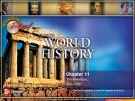
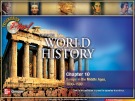
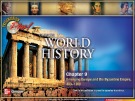
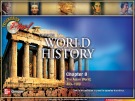

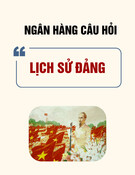







![Giáo trình Tổ chức và Quản lý Hoạt động Văn hóa Thông tin Cơ sở (Ngành Quản lý Văn hóa - Trung cấp) - Trường Trung cấp Mỹ thuật - Văn hóa Bình Dương [Mới nhất]](https://cdn.tailieu.vn/images/document/thumbnail/2025/20251110/kimphuong1001/135x160/17861762748492.jpg)





